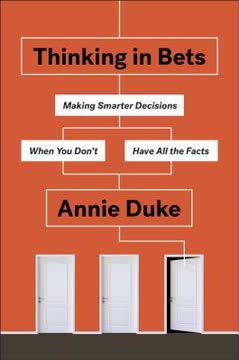Key Takeaways
1. Value is Subjective: Price the Client, Not the Job
To be able to price on the high end of this range, you must first fully embrace this idea that value is entirely personal.
Subjectivity reigns. Value isn't inherent in a service or product; it's a subjective construct of the person making the valuation. This means that the same deliverable can be worth vastly different amounts to different clients. A logo for a local shop versus a global brand illustrates this perfectly.
Emotional contributions. Beyond economic factors like revenue gains and cost reductions, "emotional contributions to value" such as prestige, risk avoidance, simplicity, and peace of mind play a significant role. These emotional factors can magnify the perceived value and justify a higher price. For example, a company facing a critical rebrand might pay a premium to mitigate the risk of failure.
Fairness is a feeling. Fairness is the feeling that the transaction and price paid were positive enough that they would gladly do it again. It's more personal than value because it's purely emotional. Even if you feel your price is high, the client's perception is what matters.
2. Commodities vs. Creations: Innovate, Don't Just Produce
You can have a culture of efficiency or one of customer innovation (value creation) but not both.
Producer vs. Marketer. Businesses operate on a spectrum between production and marketing. Producers focus on efficiency and cost reduction, while marketers prioritize innovation and value creation. Commodity producers aim for fungibility, while marketers seek differentiation.
Culture dictates strategy. A firm's culture will either be focused on maximizing efficiencies or on maximizing customer value. These two objectives cannot coexist harmoniously because innovation is inherently inefficient. Pursuing efficiencies often leads to commodification and an inability to command premium prices.
Embrace innovation. To escape the pressures of commodification, creative firms must embrace a culture of innovation. This means prioritizing customer value, investing in R&D, and accepting the higher levels of risk and messiness that come with creativity.
3. Inputs, Outputs, Value: Sell the Desired Future State
Cost-plus pricing is, historically, the most common pricing procedure because it carries with it an aura of financial prudence … in practice, it is a guide to financial mediocrity.
Three pricing approaches. Creative firms can price based on inputs (time and materials), outputs (deliverables), or value (client's desired future state). Selling value, rather than inputs or outputs, unlocks the highest levels of profitability.
Value-based pricing. Value-based pricing ties the price to the value the client will receive, such as increased revenue or cost savings. This approach requires understanding the client's goals and quantifying the potential economic impact of your services. For example, a UX firm might charge a percentage of the increased profit generated by a new customer loyalty app.
Shift the focus. Value-based pricing shifts the firm's focus from internal efficiencies to customer value and innovation. This long-term perspective fosters a culture of creativity and allows the firm to command higher margins.
4. Multiple Value Streams: Unbundle Your Thinking
You deliver value in many different forms beyond your core offering.
Beyond the core. Creative firms deliver value in many ways beyond their core service, including design quality, prestige, speed, research, testing, project management, and access to senior personnel. Recognizing these different value streams is crucial for effective pricing.
Client-specific value. Different clients value these forms of value differently. Some may prioritize speed, while others may value prestige or access to senior personnel. Understanding these preferences allows you to tailor your offerings and pricing accordingly.
Bundling, not à la carte. Avoid offering value streams à la carte. Instead, bundle them into packages that cater to specific client needs. This prevents direct price comparisons and allows you to maintain higher margins.
5. Options are Key: Control the Comparison
Presenting options changes the question you are asking the client from, “Does this proposal represent good value?” to a better question, “Which of these proposals is the best value?”
Context is everything. Human beings cannot perceive absolute value; they can only make comparisons. Providing options gives clients the context they need to assess value and make informed decisions.
Three is the magic number. Always present three options in your proposals. This leverages the principle of extremeness aversion, which states that people tend to avoid the highest and lowest prices, gravitating toward the middle option.
Decoys influence choice. Not all options need to be equally desirable. Decoys are options designed to nudge clients toward the preferred choice. By strategically placing and pricing decoys, you can influence the client's decision-making process.
6. Anchor High: Prime the Value Perception
It’s not the job of the $500 price tag to sell $500 t-shirts. It’s the job of the $500 price tag to sell $275 t-shirts by making them look like good value in comparison.
Anchoring effect. Anchoring is a cognitive bias that influences our perception of value. By presenting a high-priced option first, you establish a reference point that makes the other options seem more affordable.
Prime the thought process. Anchoring works by priming the client's thought process around the value of the proposal. Starting with a high number skews the entire negotiation in your favor.
Even when you know. Anchoring is so powerful that it works even when you know it's being done to you. Always lead with your most expensive anchor option to maximize your revenue potential.
7. Communicate Orally First: Early Objections are Your Friends
Those who do not talk about it do not make it.
Early objections are valuable. Always discuss pricing orally before presenting a written proposal. This allows you to address any price objections early in the sales process.
Money conversations are essential. Overcome any discomfort or fear of talking about money. The more comfortable you are discussing pricing, the more successful you will be.
Stress comes from avoidance. Money conversations are stressful when you're not having them. By addressing pricing early and often, you can reduce stress and increase your chances of closing the deal.
8. Master the Value Conversation: It's All About Them
If you only read one chapter…
Value conversation is key. The value conversation is the most important skill in value-based pricing. It involves understanding the client's desired future state, quantifying the value you can create, and agreeing on a fair price.
Four-step framework:
- Commit the client to their desired future state
- Determine the metrics of success
- Agree on the value of success
- Offer pricing guidance
Focus on the client. The value conversation is all about the client and their goals. By focusing on their needs and desires, you can build trust and establish yourself as a partner in their success.
9. One-Page Proposals: Respect Their Time
The proposal is the words that come out of your mouth.
Proposals are conversations. The proposal is not a sales document; it's a conversation starter. The one-page document serves as a visual aid to support your discussion.
Keep it concise. Limit unpaid proposals to one page. This forces you to focus on the essential information and respects the client's time.
Paid proposals. For complex engagements requiring extensive discovery work, charge a fee for the proposal process. This ensures that you are compensated for your time and expertise.
10. Never Discount (Unless You Do It Right): Preserve Value
It’s not the price you charge, it’s how people feel about the price they have to pay.
Discounts devalue. Discounts can devalue your services and undermine your positioning as an expert. Avoid discounting to win business.
Loyalty rewards. Reserve discounts for loyal clients who deserve a break. Frame the discount as a favor and document it properly to prevent it from becoming the new standard.
Trade value, don't just cut price. If you must offer a lower price, take out some value in return. This maintains the integrity of your pricing and ensures that you are still fairly compensated for your work.
11. Remove Pricing From the Front Lines: Centralize Authority
It’s not the writing that’s hard… What’s hard is sitting down to write.
Empower the right people. The person doing the selling should not always be the one setting the price. Remove pricing authority from those who are overinvested in the sale or lack negotiating skills.
Invoke policy. Use policies to protect your pricing and prevent clients from demanding unreasonable concessions. A policy is a predetermined decision that cannot be easily negotiated.
Create a pricing council. Consider creating a pricing council or appointing a chief value officer to oversee all pricing decisions. This ensures consistency and prevents ad hoc discounting.
12. Untether From Time: Embrace Value-Based Metrics
It’s not the writing that’s hard… What’s hard is sitting down to write.
Time is a poor metric. Tracking and selling time reinforces a cost-based mindset and limits your profit potential. Untether yourself from time by focusing on value-based metrics.
Transition gradually. If you're struggling to let go of time, start by value pricing the strategy phase of your engagements. This allows you to test the waters and build confidence in your ability to price based on value.
Embrace alternative models. Explore alternative pricing models such as retainers for strategic guidance, leasing, and performance-based fees. These models can unlock new revenue streams and better align your compensation with the value you deliver.
Last updated:
FAQ
What is "Pricing Creativity" by Blair Enns about?
- Value-Based Pricing for Creatives: The book is a comprehensive guide to moving creative professionals and firms away from hourly billing and toward value-based pricing.
- Principles, Rules, and Tips: It distills pricing theory into actionable principles, rules, and tips specifically tailored for creative businesses.
- Practical Application: Enns provides frameworks for proposals, negotiations, and client conversations, focusing on maximizing profit and value.
- Mindset Shift: The book challenges readers to rethink their assumptions about value, fairness, and the business of creativity.
Why should I read "Pricing Creativity" by Blair Enns?
- Escape Hourly Billing: If you’re tired of trading time for money, the book offers a proven alternative that can dramatically increase your profits.
- Actionable Advice: It’s packed with real-world examples, scripts, and step-by-step processes for pricing, selling, and negotiating creative work.
- Industry-Specific: Unlike generic pricing books, it’s written specifically for creative professionals—designers, agencies, consultants, and more.
- Boost Confidence and Profit: The book addresses the psychological barriers to charging what you’re worth and provides tools to overcome them.
What are the key takeaways from "Pricing Creativity" by Blair Enns?
- Price the Client, Not the Job: Every client values your work differently; tailor your pricing to the client’s context and perceived value.
- Always Offer Options: Present proposals with three or four options to control the context and increase the likelihood of a higher sale.
- Anchor High: Start with a high-priced option to set the frame for the rest of your proposal.
- Master the Value Conversation: Learn to uncover and quantify the value you create for clients, and use this to guide your pricing.
- Limit Proposals to One Page: Keep unpaid proposals short, focused, and centered on options and value, not lengthy justifications.
How does Blair Enns define value-based pricing in "Pricing Creativity"?
- Client’s Desired Future State: Value-based pricing means charging based on the value you help the client achieve, not your time or deliverables.
- Subjectivity of Value: Value is subjective and personal; what’s valuable to one client may not be to another.
- Economic and Emotional Value: Value includes both measurable outcomes (like increased revenue) and emotional factors (like risk reduction or prestige).
- Pricing as a Conversation: The price is determined through a structured conversation that uncovers and quantifies the client’s goals and the value of achieving them.
What are the six core rules of pricing in "Pricing Creativity" by Blair Enns?
- Rule 1: Price the Client, Not the Job: Never quote a price without understanding the client’s context and value.
- Rule 2: Offer Options: Always present multiple options in your proposals to guide client choice.
- Rule 3: Anchor High: Start with a high-priced option to set the frame for the rest of your proposal.
- Rule 4: Say a Price Before You Show a Price: Discuss pricing orally before sending a written proposal to handle objections early.
- Rule 5: Master the Value Conversation: Use a structured conversation to uncover and quantify the value you can create.
- Rule 6: Limit Unpaid Proposals to One Page: Keep proposals short, focused, and centered on value and options.
How does "Pricing Creativity" by Blair Enns recommend structuring proposals?
- Three or Four Options: Always present at least three options, each with increasing value and price, to leverage extremeness aversion and guide clients to the middle.
- One-Page Format: Limit unpaid proposals to a single page, focusing on options and prices, not lengthy explanations or justifications.
- Start with the Anchor: Present the highest-priced, most comprehensive option first to set the context for the rest.
- Highlight Tradeoffs: Clearly communicate what is included and excluded in each option, so clients understand the value of moving up.
What is the "value conversation" in "Pricing Creativity" by Blair Enns, and how do you master it?
- Four-Step Framework: The value conversation involves (1) committing the client to their desired future state, (2) determining success metrics, (3) agreeing on the value of success, and (4) offering pricing guidance.
- Focus on Outcomes, Not Inputs: The conversation is about what the client wants to achieve, not what you will do or how long it will take.
- Quantify Value: Work with the client to put numbers to the outcomes, both economic and emotional.
- Practice and Comfort: Mastery comes from repeated practice; the more you do it, the more natural and effective you become.
How does "Pricing Creativity" by Blair Enns address the subjectivity of value and fairness?
- Value is Personal: The book emphasizes that value is entirely subjective and varies from client to client, even in B2B settings.
- Fairness is a Feeling: Fairness is not about logic or formulas; it’s about how the client feels about the price and the transaction.
- Double Thank-You Moment: The goal is to reach a point where both you and the client genuinely thank each other at the end of the deal.
- Avoid Imposing Your Standards: Don’t let your own sense of fairness limit your pricing; let the client decide what’s fair for them.
What are the main pricing models discussed in "Pricing Creativity" by Blair Enns?
- Inputs (Time and Materials): Charging based on hours worked and materials used; common but limits profit and innovation.
- Outputs (Deliverables): Charging for specific deliverables or projects; offers more certainty but still often tied to inputs.
- Value-Based Pricing: Charging based on the value created for the client; allows for the highest profit and aligns incentives.
- Alternative Models: The book also explores retainers, leasing, sprints, points, pay-what-you-like, and performance-based pricing.
How does "Pricing Creativity" by Blair Enns suggest handling negotiations and price objections?
- Say Price Early: Discuss pricing before sending a proposal to surface objections early.
- Never Discount to Win Business: Discounts are for loyal clients, not for winning new ones; document any discounts clearly.
- Offer Terms or Remove Value: If the client can’t afford your price, offer payment terms or remove some value instead of cutting price.
- Be Willing to Walk Away: Maintain your power by being ready to walk away from deals that don’t meet your standards.
What are the psychological and behavioral economics concepts used in "Pricing Creativity" by Blair Enns?
- Anchoring: Setting a high initial price to influence the client’s perception of value.
- Extremeness Aversion: Clients tend to avoid the highest and lowest options, gravitating toward the middle.
- Choice Architecture: How you present options and information shapes client decisions.
- Cognitive Biases: The book discusses social proof, loss aversion, sunk cost bias, scarcity bias, and more, showing how to ethically use them in pricing and proposals.
What are the best quotes from "Pricing Creativity" by Blair Enns and what do they mean?
- “Price the client, not the job.” – Focus on the unique value each client perceives, not a one-size-fits-all price.
- “The easiest way to make big changes to how much you charge is to first change how you charge.” – Shifting your pricing model is more effective than incremental price increases.
- “Your pricing goal is to create as much value for your client as you can, communicate it to the client, and then capture as much of that value for yourself while still creating that double thank-you.” – Aim for mutual satisfaction and long-term relationships.
- “Those who do not talk about [money] do not make it.” – Overcome discomfort with money conversations to achieve financial success.
- “In business, all profit comes from risk.” (Peter Drucker, quoted) – Taking on and managing risk is central to earning higher profits in creative work.
Review Summary
Pricing Creativity receives overwhelmingly positive reviews, with readers praising its practical approach to value-based pricing for creative services. Many consider it transformative for their businesses, offering actionable advice on every page. Reviewers appreciate Blair Enns' expertise and ethical approach, noting that the book's strategies benefit both businesses and clients. Some highlight its potential to significantly increase earnings and improve service quality. The book is widely recommended for creative professionals and agency owners, with many wishing they had read it earlier in their careers.
Similar Books










Download PDF
Download EPUB
.epub digital book format is ideal for reading ebooks on phones, tablets, and e-readers.





